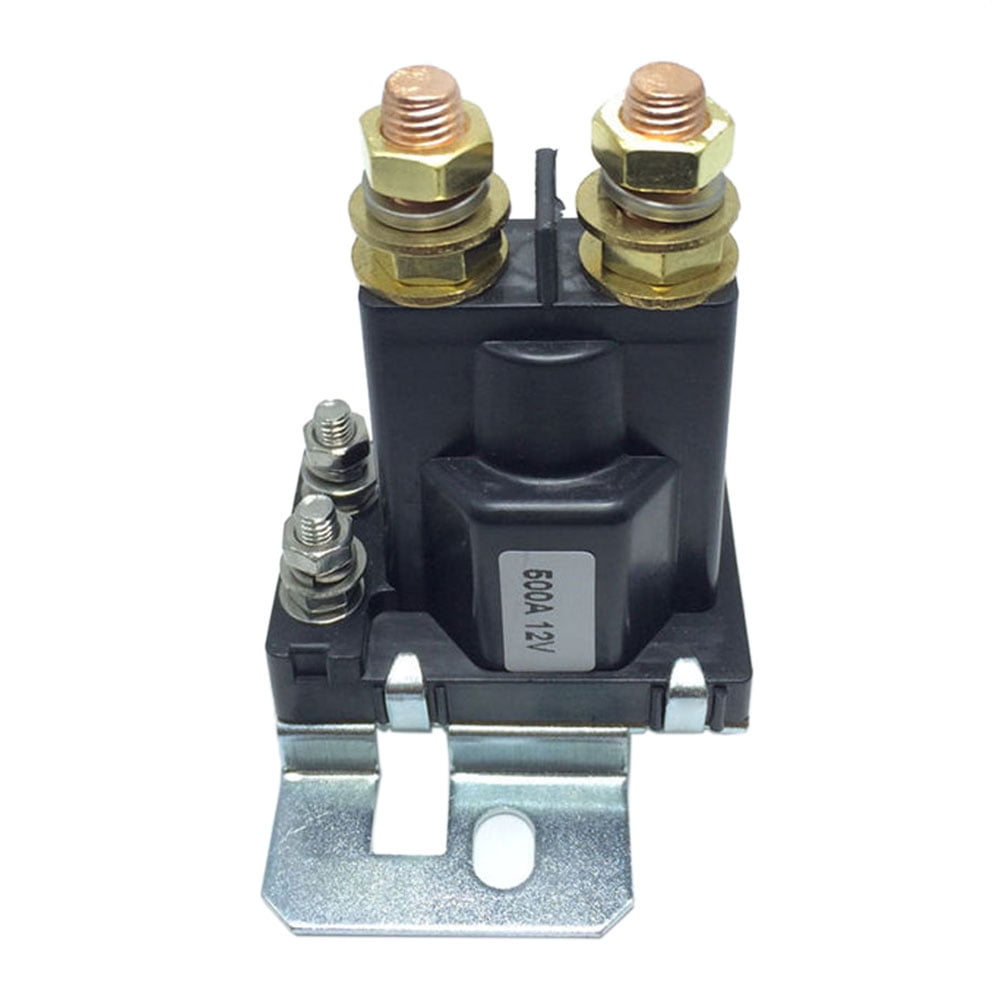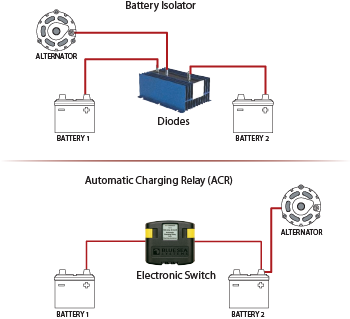

“ = FALSEĩ- “An ACR will allow the start battery to drain into the house battery and leave it depleted.” = FALSE Let’s take a look at some of the myth & lore that are often incorrectly assumed ACR Myth & Lore:ġ- “ An ACR charges the start battery first then isolates it and charges the house” = FALSEĢ- “An ACR gives priority charging to the start battery” = FALSEģ- “An ACR will over charge a start battery” = FALSEĤ- “An ACR can’t be used with mixed chemistries” = PARTIALLY FALSEĥ- “You can’t charge the house bank first or the start battery will never get charged” = FALSEĦ- “Blue Sea says to wire charging to the start battery only.” = FALSEħ- “With a smart battery charger you must wire an ACR disable switch into the negative lead of the ACR” = MOSTLY FALSEĨ- “ When the ACR combines batteries the massive in-rush current can blow up a battery. and they all do just about the same thing.ĭespite the gross simplicity of the Blue Sea Systems ACR these little units are fraught with myth and lore. The class as a whole is know by many names such as VSR’s, ACR’s, Combiners, Parallel Combiners etc. The term ACR is a trademarked term by Blue Sea Systems for their version of a VSR or voltage sensing relay. Voltage Sensing Relay (VSR): A generic term for an electronic voltage triggered paralleling relayĬombiner: Another generic term for an electronic voltage triggered paralleling relay They include ACR/VSR/Combiners, DC to DC buck or boots chargers, diode type battery isolators, DC to DC buck type chargers & DC to DC current limited voltage following devices.Īutomatic Charging Relay (ACR): A Blue Sea Systems trade name for an electronic voltage triggered paralleling relay Most VSR’s operate similarly but with varying voltage triggers or delays.Ĭharge Management Devices (CMD’s): Devices used to route or direct charging sources to a targeted battery or battery bank. This article deals specifically with the Blue Sea Systems ACR, because they are easily the number one seller in this class of CMD’s.

Even Smartgauge makes a VSR and the Balmar Duo Charge can be wired to work as a simple VSR. Blue Sea Systems is not the only manufacturer of “Combiner/VSR’s” and today the competition is actually quite wide spread including Yandina, Sterling Power, Victron, BEP and many, more.

Wayne has been retired now, for at least a few years, and that number is now likely much larger. of Blue Sea Systems, a number of years ago, he suggested that over 500,000 ACR’s had been sold world wide. The Blue Sea Systems ACR’s (automatic charging relays) are one of the most common charge management devices in existence today. Unlike a diode type isolator, which causes an approximate 0.6V volt drop to the batteries being charged, the combiner/VSR’s were simple voltage triggered paralleling switches and both batteries could be charged without human intervention or the voltage drop associated with diode type isolators. Back in the early 90’s the first of the voltage sensing relays were hitting the market, thus no longer requiring the owner to do anything to the battery switch in order to charge both battery banks. Many a boater has succumbed to two dead banks due to what we refer to as HEF (Human Error Factor). However, when the owner stopped the boat the switch was often forgotten about and left in the PARALLEL position thus draining both batteries while on the hook. This was all well and good, charging in parallel, so long as the motor was running. The most ubiquitous of these methods was simply switching to the BOTH/ALL or 1+2 setting on a 1/BOTH/2 battery switch. In days of old a boat owner had to use the battery switch to route/direct charging to the bank or banks they desired to charge. It does this automatically with no human forgetfulness. You read that correctly, in its simplest form, all an ACR really does is parallel batteries when charging is present and un-parallel batteries when there is no charging present. MHT RECOMMENDED PRODUCTS: AFILLIATE DISCLAIMER WARNING: The ACR’s in this article are not for use with LiFePO4 Batteries!Īn ACR is nothing more than a fully automatic, voltage triggered, BOTH/PARALLEL switch that closes when charging voltage is present and opens when charge voltage is no longer present.


 0 kommentar(er)
0 kommentar(er)
